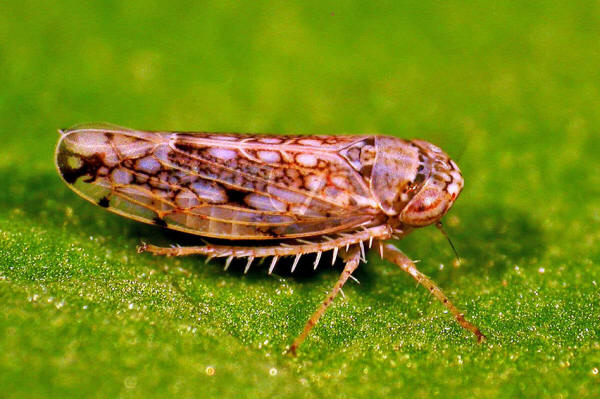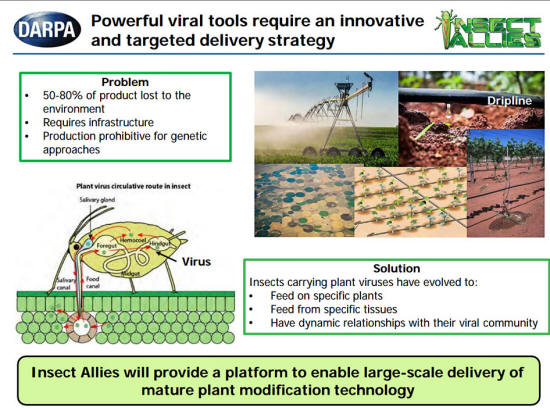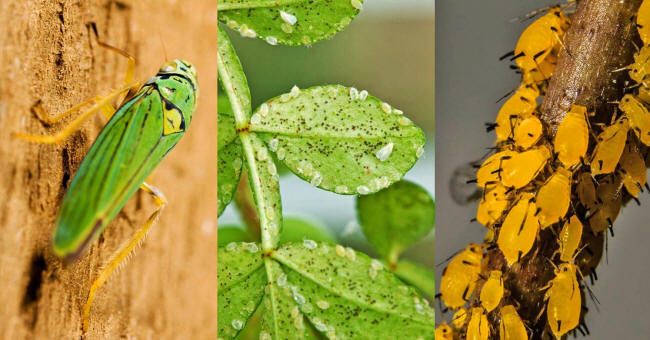|

by Tyler Durden
October 05,
2018
from
ZeroHedge Website

Wikipedia Commons
Technocrats at DARPA are creating a new
technology that could potentially become the
deadliest bioweapon on earth.
The Defense Advanced Research Projects Agency is
an agency of the Department of Defense and
develops technology for the military.
Source
Bioweapon? -
Scientists Sound Alarm over DARPA Plans to Spread Viruses using
Insects
A team of scientist sounds the alarm in a new Science Policy
Forum report (Agricultural
Research, or a New Bioweapon System?)
about a mysterious U.S. government program that is developing
genetically modified viruses that would be dispersed into the
environment using insects.
The virus-infected or
'Frankenstein' insects are being developed as countermeasures
against potential natural and engineered threats to the U.S. food
supply.
The program is operated
by the Pentagon’s Defense Advanced Research Project Agency (DARPA)
could be viewed as an attempt to develop an entirely new class of
bioweapons that would prompt other nations to seek similar weapons,
they cautioned.
The researchers from the Max Planck Institute for Evolutionary
Biology and the University of Freiburg both in Germany, and the
University of Montpellier in France suggest DARPA's program could
likely breach the
Biological Weapons Convention, the
first multilateral disarmament treaty banning the development,
production, and stockpiling of biological and toxin weapons.

Dubbed the "Insect
Allies" program, DARPA began modifying insects in 2017,
with the plan to produce more resilient crops to help farmers deal
with climate change, drought, frost, floods, salinity, and disease,
said Gizmodo.
The technology at the
center of the program is an entirely new method of
genetically modifying crops.
Instead of modifying
seeds in a lab, farmers would send swarms of insects into their
crops, where the genetically modified bugs would infect plants with
a virus that passes along the new resilience genes, a process known
as horizontal genetic alteration.
Hence the technology’s
name - Horizontal Environmental Genetic Alteration Agents (HEGAA).
For HEGAA to work,
Gizmodo explains that DARPA labs
develop a virus that is inserted into the chromosome of a target
organism. Scientists would use leafhoppers, whiteflies, and aphids
genetically altered in the lab using
CRISPR, or a variant of a
gene-editing system, to carry the virus into crops.

Each plant would then be
infected by the insect, triggering the intended effects of
protecting crops from natural and or human-made threats.
However, the lead author of the report, Richard Guy Reeves
from the Department of Evolutionary Genetics at the
Max Planck Institute for Evolutionary Biology,
says DARPA's Insect Allies program is disturbing and an example of
dual-use research in which the U.S. government, in addition to
aiding farmers' crops, is also developing a biological weapon.
Insect Allies is reportedly backed by $27 million of funding.
According to Gizmodo,
there are four academic research teams currently working on the
project, including researchers at the,
-
Boyce Thompson
Institute in New York
-
Pennsylvania
State University
-
Ohio State
University
-
University of
Texas at Austin
DARPA maintains that,
"all work is
conducted inside closed laboratories, greenhouses, or other
secured facilities," and that the insects have built-in
lifespans to limit their spread.
By 2020 or 2021, DARPA is
planning on testing the virus-infected insects on crops inside
greenhouses at undisclosed locations.
Reeves said the use of insects as a vehicle for genetic modification
is a horrible idea because they cannot be controlled and indicates
that traditional overhead sprays to deliver HEGAAs is the safest
bet.
DARPA says insects are
the only practical solution, as overhead spraying of
HEGAAs would
require increased farming infrastructure - something that is not
available to all farmers.

Scientists are critical of a DARPA program
that they say could turn three types of insects:
leafhoppers, white flies and aphids,
into a biological army.
(iStock/The Washington Post)
The report specifies how there is currently no global regulatory
framework to support this new way of transporting HEGAAs to crops,
which if not supervised correctly, could lead to potential mishaps.
The scientists of the report interpret DARPA's insect program as,
"an intention to
develop a means of delivery of HEGAAs for offensive purposes,"
such as conducting biological warfare.
These genetically
modified bugs could be implanted with a dangerous plant-killing
disease that the
Trump
administration could unleash over farmland in Venezuela,
Syria, Iran, North Korea, Russia, and or even China, that would
decimate the countries' food supply.
The introduction of this potentially dangerous technology, the
scientists argue, would usher in an entirely new class of
biological, insect-dispatched weapons that could be considered
weapons of mass destruction. Scientists warn that this technology
would spur rival nations to develop similar insect programs.
In response to a Gizmodo question, a spokesperson for DARPA said it
welcomes academic dialogue about the Insect Allies program,
but criticizes the conclusion of the report, saying it is,
"misleading and
peppered with inaccuracies."
Blake Bextine,
DARPA Program Manager for Insect Allies, rejects many of the claims
made by Reeves.
"DARPA is not
producing biological weapons, and we reject the hypothetical
scenario," Bextine told Gizmodo.
"We accept and agree with concerns about potential dual use of
technology, an issue that comes up with virtually every new
powerful technology.
Those concerns are
precisely why we structured the Insect Allies program the way we
did, as a transparent, university-led, fundamental research
effort that benefits from the active participation of regulators
and ethicists and proactive communication to policymakers," said
Bextine.
The purpose of Insect
Allies program, he states, is to prepare for a new era of emerging
threats to U.S. agriculture.
Brextine added that DARPA
is evaluating the potential environmental impacts of HEGAAs.
"DARPA is
extraordinarily sensitive to environmental risks and off-target
effects, and has structured the Insect Allies program to
identify and mitigate them," he said.
"DARPA has mandated
multiple levels of biosafety and biosecurity at each stage of
the program."
If DARPA’s program
succeeds, they will have developed gain-of-function treatments that
can be delivered to the,
"right plants" and
the "right tissue," he said.
In other words, DARPA
wants precision guided biological weapon insects.
Jason Delborne, an Associate Professor at North Carolina
State University, an expert in genetic engineering, says the
concerns seem "appropriate."
"The social, ethical,
political, and ecological implications of producing HEGAAs are
significant and worthy of the same level of attention as
exploring the science underpinning the potential technology,"
Delborne told Gizmodo.
"The authors argue persuasively that specifying insects as the
preferred delivery mechanism for HEGAAs is poorly justified by
visions of agricultural applications.
The infrastructure
and expertise required for spraying agricultural fields - at
least in the U.S. context - is well established, and this
delivery mechanism would offer greater control over the
potential spread of a HEGAA."
DARPA could be on the
cusp of obtaining a new biological weapon that would most certainly
be used against,
-
Venezuela
-
Syria
-
Iran
-
North Korea
-
Russia
-
even China,
...to cripple the
countries' food supply and lead to a regime change without firing a
signal shot... this the future of warfare.
|





